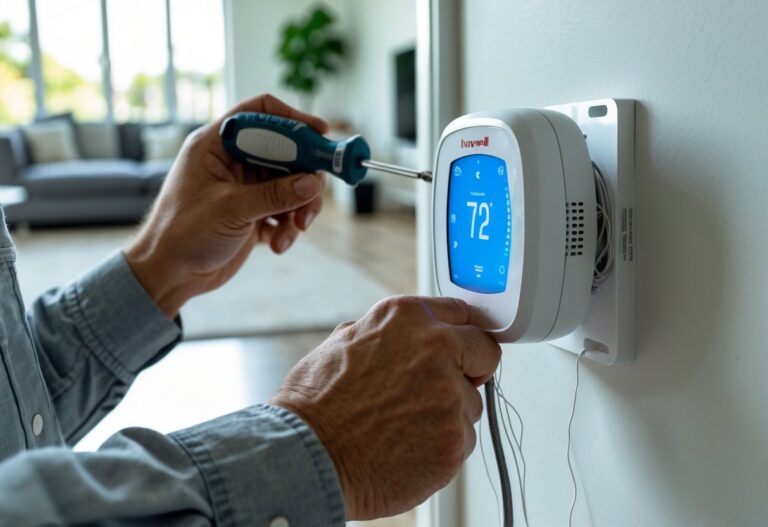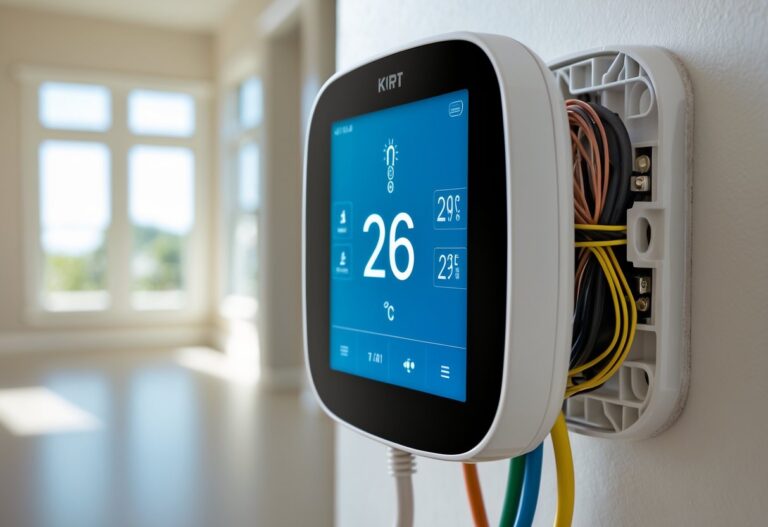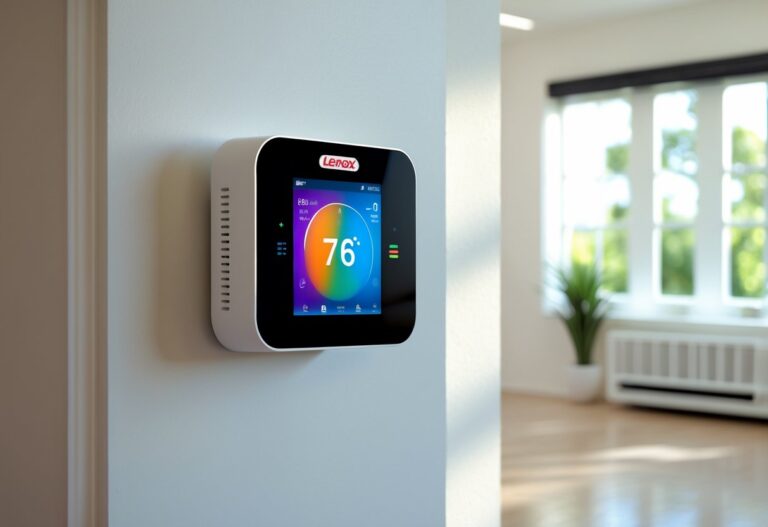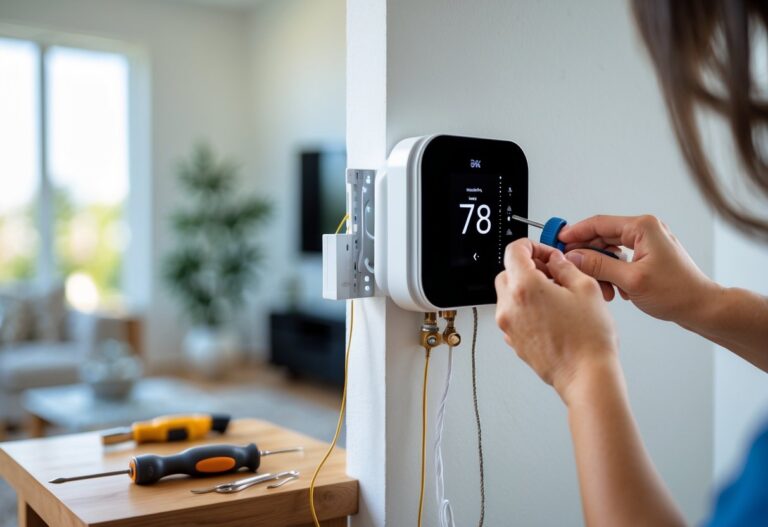Smart thermostats are changing the way you control the temperature in your home. With just a few taps on your phone, you can easily adjust your heating and cooling, no matter where you are. A smart thermostat works by connecting to your home’s Wi-Fi and your HVAC system, allowing you to manage settings, schedules, and energy use from anywhere.
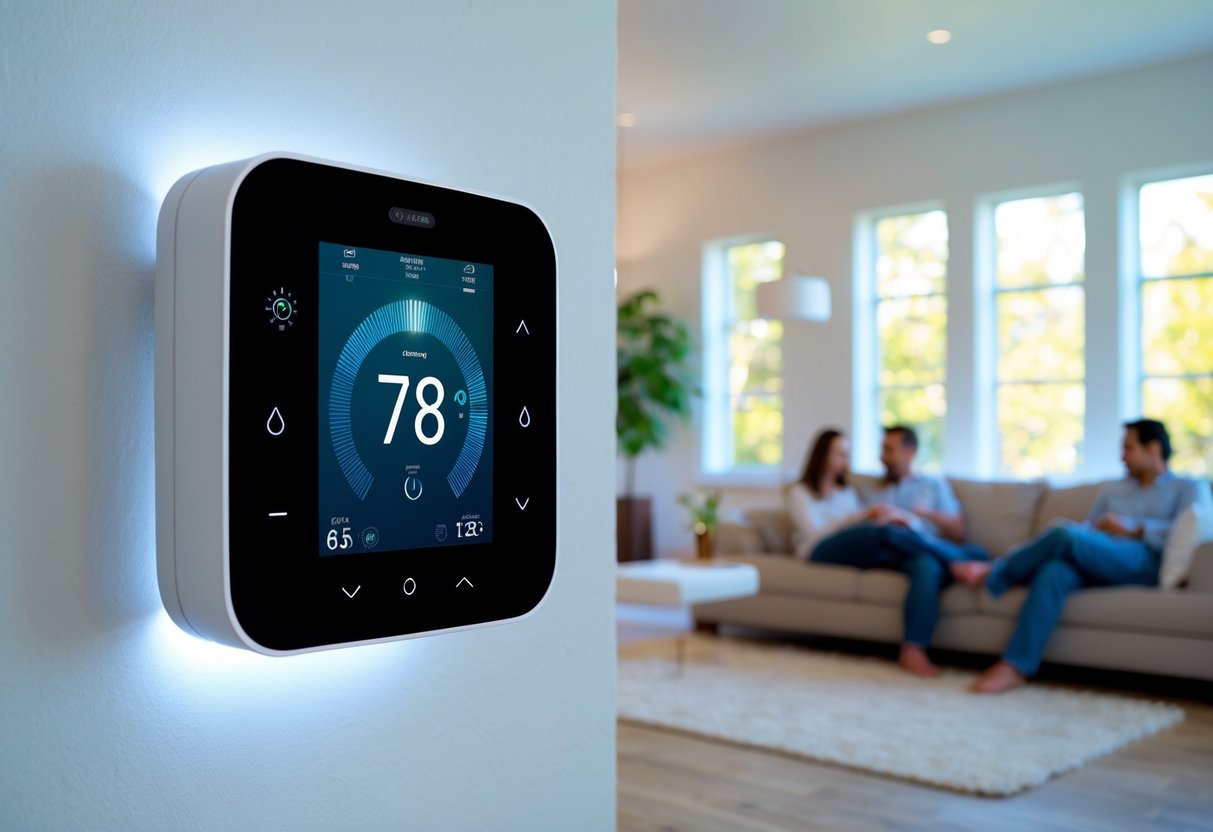
Unlike regular thermostats, smart versions can learn your routine, help save energy, and even respond to the weather. You get the convenience of remote control and features that can make your home more comfortable and efficient. With all these benefits, it’s easy to see why more people are choosing smart thermostats.
Key Takeaways
- Smart thermostats use Wi-Fi to let you control your home’s temperature remotely.
- These devices offer features that help boost comfort and save energy.
- You can manage your home’s heating and cooling with more ease and control.
Core Technology and Operation
Smart thermostats use advanced sensors, wireless connectivity, and easy-to-use controls to help you manage your home’s heating and cooling system. They are designed to work with HVAC systems and connect with other smart home devices.
Sensors and Sensor Technology
Smart thermostats often include temperature sensors, humidity sensors, and sometimes occupancy sensors. Temperature sensors track the room’s heat or cold, allowing the thermostat to adjust the HVAC system to your preferred setting. Humidity sensors measure moisture in the air, which helps the device maintain comfort and can prevent your home from feeling stuffy.
Occupancy sensors use infrared or motion technology to know if someone is home. This feature lets the thermostat adjust heating or cooling based on your activity, reducing energy waste when spaces are empty. Some models even let you place extra sensors in different rooms, so your system can focus on the rooms you use most.
These technologies work together to keep your home’s climate comfortable and efficient without the need for constant manual adjusting.
Connectivity and Integration
Smart thermostats connect to Wi-Fi so you can control your heating and cooling systems from anywhere using your smartphone or a web browser. Wireless communication allows you to adjust settings remotely, see energy usage, and set schedules even if you aren’t at home.
Many smart thermostats support integration with smart home systems like Amazon Alexa, Google Assistant, and Apple HomeKit. This means you can change the temperature using your voice, connect your thermostat with smart speakers, or set up routines that link your HVAC system to other smart devices.
Integration with smart home technology also helps your thermostat work in sync with other systems—like lights, locks, and blinds—giving you more control and potential energy savings.
Display Interfaces and Controls
Smart thermostats are designed with clear, easy-to-read display interfaces. Most have bright touchscreens that let you see and change your settings. Some show indoor and outdoor temperatures, as well as weather forecasts.
You can use physical buttons, touch controls, or even voice commands to set your desired temperature. With remote access through smartphone apps, you can make changes when you are away from home. This means you don’t have to be in the same room—or even the same city—to manage your heating and cooling.
Many models have simple menus and large icons for easy navigation. Some also offer alerts, reminders, and quick access to energy reports so you can see how your choices affect your usage.
Features and Smart Capabilities
Smart thermostats use advanced technology to make managing your home temperature simple and efficient. They give you more control, help you save energy, and let you adjust settings from almost anywhere.
Learning Algorithms and Personalization
Smart thermostats use machine learning and advanced software to understand your temperature preferences. Instead of just following a daily schedule like a programmable thermostat, they watch and adapt to how you adjust the heat or air throughout the day.
Over time, the device learns your routines and makes automatic changes that fit your lifestyle. For example, it can lower the heat when you leave for work and increase it before you get home. This technology personalizes heating and cooling schedules without you having to keep reprogramming settings.
Many models, like Nest and Honeywell, also provide energy usage insights. You can see reports in the app that show how much energy you use and suggestions for saving more. These regular software updates and insights help your unit get smarter and give you better results as time goes on.
Remote Access and Automation
With Wi-Fi connectivity, smart thermostats offer strong remote access. You can use your phone, tablet, or computer to check or change the temperature of your home from anywhere that has internet service.
Home automation features let you set routines and triggers. You can connect the thermostat to other devices for more control. Geofencing is a popular tool that tracks the location of your smartphone. When you leave the house, the system can automatically change temperature settings to save energy, and it can warm or cool your home before you get back.
Automation also means you can set up alerts for maintenance or reminders to change your filters. These tools keep your home comfortable and help you avoid costly repairs.
Compatibility and Installation
Smart thermostats are designed to work with many heating and cooling systems, but checking compatibility is important. Most work with central HVAC systems, but some older units might not support every feature.
Many thermostats need a c wire, or “common wire,” for power. This wire provides continuous electricity so your thermostat can run features like Wi-Fi and software updates. If your current system does not have a c wire, you might need an adapter or help from a professional.
Installation is usually simple, with clear guides and color-coded wiring. Brands like Nest and Honeywell offer step-by-step instructions. If you are comfortable turning off power and connecting wires, you can install most units yourself. For more complex set-ups, hiring an expert ensures everything works safely.
Benefits and Impact on Home Environment
Smart thermostats offer real advantages for your home. They help lower energy consumption and can increase comfort for everyone in your living space.
Energy Efficiency and Savings
Using a smart thermostat helps you track your energy use in detail. These devices adjust heating and cooling based on your habits or schedule, avoiding wasted energy. For example, they can reduce heating or cooling when you are away, then return the house to your preferred temperature before you get back.
Many smart thermostats display energy reports. You can see when your HVAC system uses the most energy and spot chances to save. Most models let you set heating or cooling goals and will give you tips to lower your utility bills.
Reducing energy waste means lower energy bills and a smaller carbon footprint. When your HVAC system runs more efficiently, you use less electricity or gas, which is better for your wallet and the environment.
Key energy-saving features
- Programmable schedules
- Learning your routine
- Remote control by phone or computer
- Recommendations for further savings
Comfort and Indoor Air Quality
Smart thermostats keep your home at a steady, comfortable temperature. They learn your preferences and can adjust automatically to keep each room at your ideal setting. Some models even work with sensors to control temperature by room or zone.
You can adjust settings at any time from your phone. This feature is helpful if your plans change or if someone arrives home early. Advanced models can also help manage humidity, which can keep your home’s air from feeling stuffy or dry.
Better comfort also means improved indoor air quality. By controlling humidity and running fans when needed, your thermostat can help filter the air and maintain a healthier home environment.
